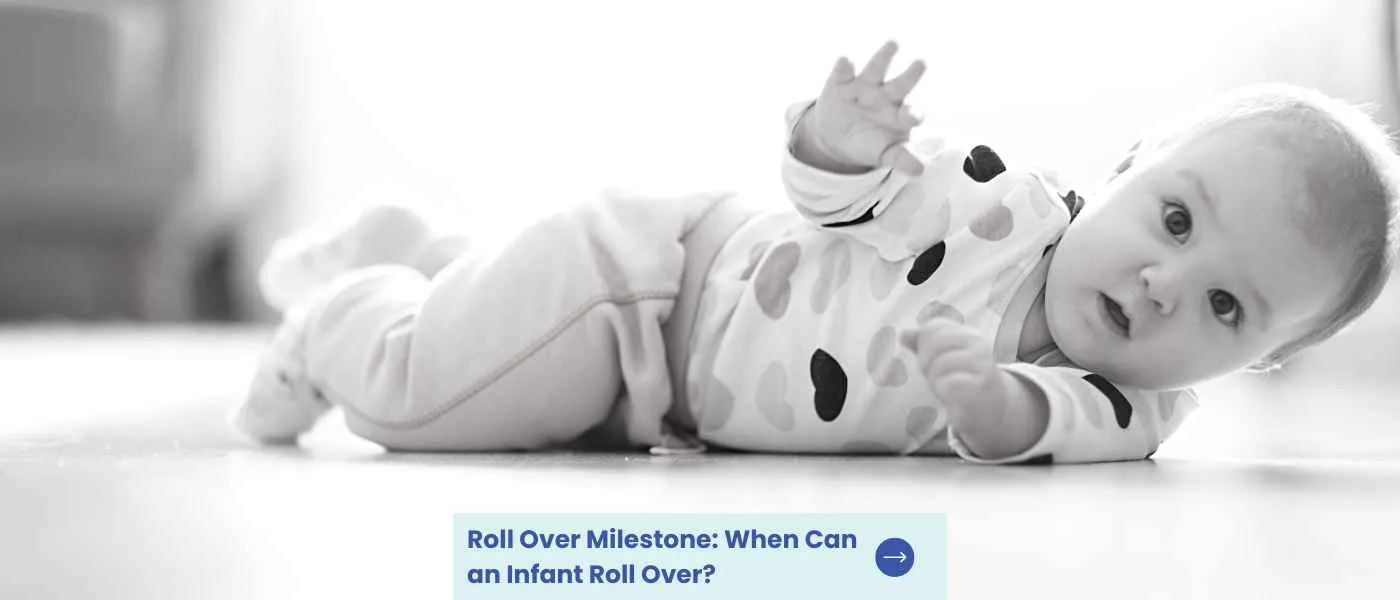As a new parent, watching your baby hit their developmental milestones is an exciting and rewarding experience. One of the first milestones that your little one will reach is rolling over, and it’s a sure sign that your baby is becoming more mobile and independent.
But when can you expect your baby to roll over? And what can you do to help them reach this milestone?
On average, most babies learn how to roll over between 4-6 months of age. However, some infants can be able to do so as early as 3 months old and others may take until 8 or 9 months of age before they can roll from their back onto their stomach.
In this article, we’ll cover everything you need to know about when and how babies roll over, tips and techniques for helping your baby reach this milestone, and other important information for new parents.
Whether you’re eagerly waiting for when your baby starts rolling or just want to learn more about this important developmental stage to encourage rolling, this guide is a must-read for any new parent. So, get ready to learn all about your baby’s rolling over milestones and how you can help them reach it, buckle up and let’s dive in!

Key Takeaways on When Babies Start Rolling Over
- Most babies typically begin to roll over between 3-6 months of age.
- Some babies may roll over as early as 2 months, while others may not roll over until 8 months.
- Rolling over is typically one of the first milestones that infants reach, preceded by lifting their head and chest while on their stomach and is an important part of baby development. Having good head control is needed to learn to roll.
At this stage, many babies can roll from tummy to back, then eventually back to tummy. This process typically happens gradually with baby’s growth over the next few weeks or even months until they are fully rolling independently.
Parents should not be alarmed if their baby isn’t mastering this skill right away – it’s perfectly normal!
It’s important for parents to remember that all babies reach milestones at different rates; some may start rolling much earlier than others or take longer before being able to rollover with ease.
As long as your baby is growing and developing normally overall, there is no need for concern about reaching developmental milestones like rolling over on time.
How to Help Your Baby Roll Over
As soon as you see your baby rolling over, it won’t be long before they can get themselves into sitting position. Create a safe environment by placing pillows around the baby so they don’t get hurt if they fall while trying to roll over.
Then place babies on their back and move an object in front of them that will encourage movement such as toys or stuffed animals.
You can also lightly rub their stomachs or sides to give gentle stimulation during the process. Doing these activities regularly helps build strength in muscles necessary for rolling over, including those located in their arms, legs, neck and torso.
- Place your baby on their back and offer toys that they can reach for. This exercise helps to encourage them to use their arm, leg and back muscles to push up.
- Tummy time is important for helping your baby strengthen the muscles they need for rolling over. Move down to your baby’s level and play with them even for short periods only.
- Give your baby plenty of supervised floor time to practice rolling over.
- Gently roll your baby onto their side during diaper changes or when they are awake and supervised.
Supporting your baby’s chest when practicing tummy time also encourages rolling from one side to another and strengthens core muscles at the same time.
Finally, use positive reinforcement to motivate your infant to keep practicing their new skill – smile when they make progress no matter how small! Doing this will add fun into practice sessions which then reinforces successful repetition of any new moves that lead up to mastering full-on rolling from one side onto the other!
- Place your baby on their back and offer toys that they can reach for. This encourages them to use their arm and leg muscles to push up.
- Tummy time is an important activity to include in your baby’s daily routine. This allows them to strengthen your baby’s muscles they need for rolling over and other milestones. Be sure to supervise your baby during tummy time and place them on a safe, soft surface.
- Give your baby plenty of supervised floor time to practice rolling over. This allows them to explore their surroundings and experiment with their newfound mobility.
- Gently roll your baby onto their side during diaper changes or when they are awake and supervised. This can help them become more familiar with the sensation of rolling over and make it easier for them to do it on their own.
- If babies are capable of rolling in just one direction and roll onto their stomachs, it is important to move them back to their back until they have acquired the ability to roll in both directions.

Things to Keep In Mind Once Your Baby Is Able to Roll
On the first roll of your child, a whole new world opens up in their milestone moments and physical development. However, as excited as your with this development, you have to take certain precautions to keep your baby safe during their early rolls.
- Once you have a rolling baby from belly to back, remember never to leave your baby unattended once they begin rolling. You should also stop swaddling to sleep once babies begin to roll. When a swaddled baby rolls, they may struggle to breathe.
- Another thing to keep in mind is to always have a hand on your baby when they are on a changing table or other elevated surface.
- Remove crib bumpers, stuffed animals, loose blankets and pillows as soon as your baby mastered rolling.

Respond to Signs of Readiness
When an infant is ready to roll over, there are some signs that parents can look for to help determine when the baby is ready. The first sign of readiness is improved strength and control in their head and neck muscles.
Parents may see that the head is able to hold up better than before or they may notice that their baby can turn their head from side to side with greater ease.
Another important sign of readiness is increased strength of the arm muscles. Parents should observe whether or not the baby can lift his arms above his chest while lying down on her back, or if he can move them around freely during tummy time.
The last important sign of readiness is increased leg strength, as this helps babies use their feet as leverage when turning from stomach to back or vice versa.

Enjoy Tummy Time
Tummy time is an important activity for all infants to help them develop the muscles needed for rolling over and other activities. Starting tummy time shortly after birth encourages development of strong neck, shoulder, arm, back and leg muscles. The American Academy of Pediatrics recommends that newborns have supervised playtime on their stomachs during wide-awake periods several times a day.
What to do if your baby doesn’t roll over?
If your baby hasn’t started rolling over by the time they are four or five months old, you may be concerned that their development is delayed. It’s important to keep in mind that all babies develop differently and at their own pace, so there’s no need to worry if your little one isn’t rolling over yet.
It’s helpful to explore various strategies for encouraging your baby’s mobility when they’re awake and alert including talking enthusiastically while slowly moving their arms and legs back and forth or gently holding onto their hands while helping them move around on a play mat or soft blanket. Placing interesting objects within arm’s reach of your baby can also give them something fun they can work towards reaching too.
However, if you’re really worried about your baby, talk to a pediatrician or healthcare provider.




